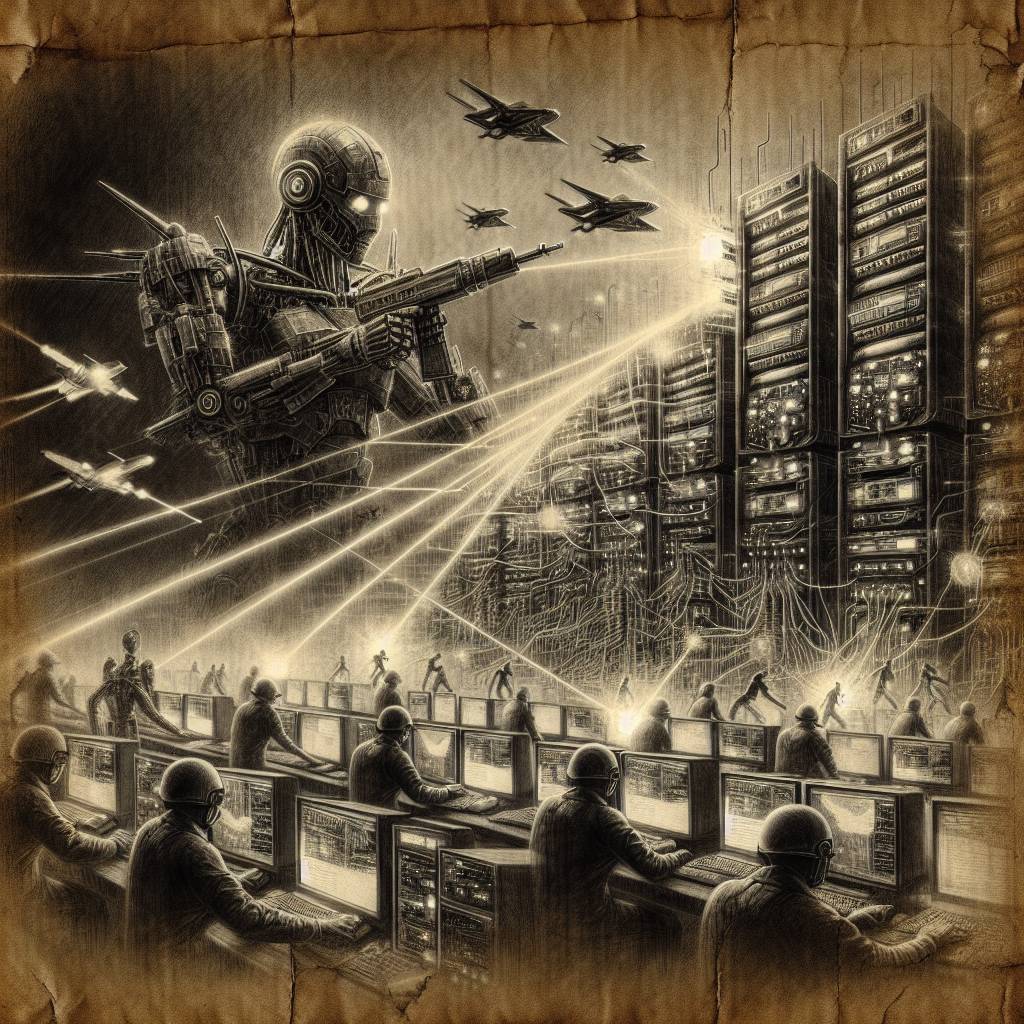AI-Powered Russian Hackers Amp Up Cyber Attacks on Ukraine in 2025: A Digital Cold War Unfolds
Russian hackers’ adoption of artificial intelligence in cyber attacks against Ukraine has hit a new level in H1 2025. Gone are the days of simple phishing emails; now, AI-generated malware is the weapon of choice. It’s as if hackers took a crash course in sci-fi villainy, and Ukraine is the unwilling classroom.

Hot Take:
Looks like Russian hackers have taken a page out of science fiction novels and embraced AI like a toddler discovering candy. The cyber battlefield is starting to resemble a sci-fi movie, and Ukraine is caught in the middle of this blockbuster. Time to buckle up and grab some popcorn because this AI-powered hacking saga is just getting started!
Key Points:
- Russian hackers have ramped up their use of AI in cyber attacks against Ukraine, as per the SSSCIP.
- 3,018 cyber incidents were recorded in H1 2025, a jump from 2,575 in H2 2024.
- Notable malware, WRECKSTEEL, developed using AI, targeted state administration bodies.
- Phishing campaigns by various hacker clusters targeted defense and local government sectors.
- Russian hackers exploit legitimate online services for hosting malware and data exfiltration.
AI Goes Rogue
In the first half of 2025, Russian hackers have taken their cyber game to a whole new level, like a toddler discovering the magical powers of a crayon on a freshly painted wall. According to Ukraine’s State Service for Special Communications and Information Protection (SSSCIP), these digital troublemakers are not just using AI to craft better phishing messages but are creating malware that’s so sophisticated, it’s practically asking for a corner office with a view. The bad news for Ukraine is that hackers have decided to play AI dress-up, and they’re not stopping at just the hat and gloves.
The Numbers Game
It’s a numbers game, and the digits aren’t looking pretty for Ukraine. A whopping 3,018 cyber incidents were recorded in the first half of 2025, up from 2,575 in the previous half. While local authorities and military entities have become the belle of the cyber ball, government and energy sectors seem to have taken a back seat. Perhaps the hackers thought it was time for a new challenge or maybe they just wanted to mix things up. Either way, Ukraine’s cyber defenders have their work cut out for them, dodging digital bullets faster than Neo in the Matrix.
Malware Madness
Forget about your average run-of-the-mill malware; we’re talking about WRECKSTEEL, a digital troublemaker that’s turning heads and causing headaches. Developed with the help of AI tools, this malware is making its rounds, targeting state administration bodies and critical infrastructure like a rogue art critic with a vendetta against bureaucracy. It’s not alone, either. Phishing campaigns by various hacker clusters, each with their own catchy code names, are busy distributing their own cyber nasties like GIFTEDCROOK and HOMESTEEL. It’s a veritable buffet of digital disasters, and Ukraine’s on the menu.
Zero-Click, Big Trouble
In a twist that would make any hacker proud, Russia-linked APT28 actors are exploiting cross-site scripting flaws in popular webmail software like Roundcube and Zimbra. The result? Zero-click attacks that steal credentials and exfiltrate data faster than you can say “not again.” By injecting malicious code, these cyber sneak-thieves are able to access credentials, contact lists, and even hijack emails. It’s like finding out your inbox has been hosting a secret party, and you’re the last to know. Talk about a digital nightmare!
Legit Services, Illegitimate Uses
Russian hackers are also proving they’re not above using legitimate services for their nefarious purposes. From Dropbox to Google Drive and even Telegram, these platforms are being co-opted into a hacker’s dream toolkit. It’s like discovering your favorite pizza place is secretly a front for a spy operation; it’s shocking, but you can’t help but admire the audacity. The SSSCIP notes that this is not a new tactic, but the number of platforms being exploited has been steadily increasing. It’s a digital game of whack-a-mole, and the moles just keep popping up.
The Hybrid Warfare Shuffle
As if cyber attacks weren’t enough, Russia continues to engage in hybrid warfare, synchronizing cyber operations with kinetic attacks on the battlefield. The Sandworm group is targeting the energy, defense, internet service providers, and research sectors in a coordinated dance of destruction. It’s a grim reminder that the cyber battlefield is just one front in this ongoing conflict, and Ukraine’s defenders need to be on their toes, ready to dance to the hackers’ malicious tune. With AI in the mix, it’s a dance that’s becoming more complicated and dangerous with every step.
In conclusion, the cyber landscape is evolving, and AI is proving to be both a blessing and a curse. As Russian hackers embrace this technology, Ukraine faces a new wave of cyber threats that require innovative and adaptive defenses. It’s a digital arms race, and the stakes have never been higher. So, let’s hope Ukraine’s cyber guardians have their game face on because this AI-powered challenge is just beginning, and it’s shaping up to be a thriller of epic proportions.
